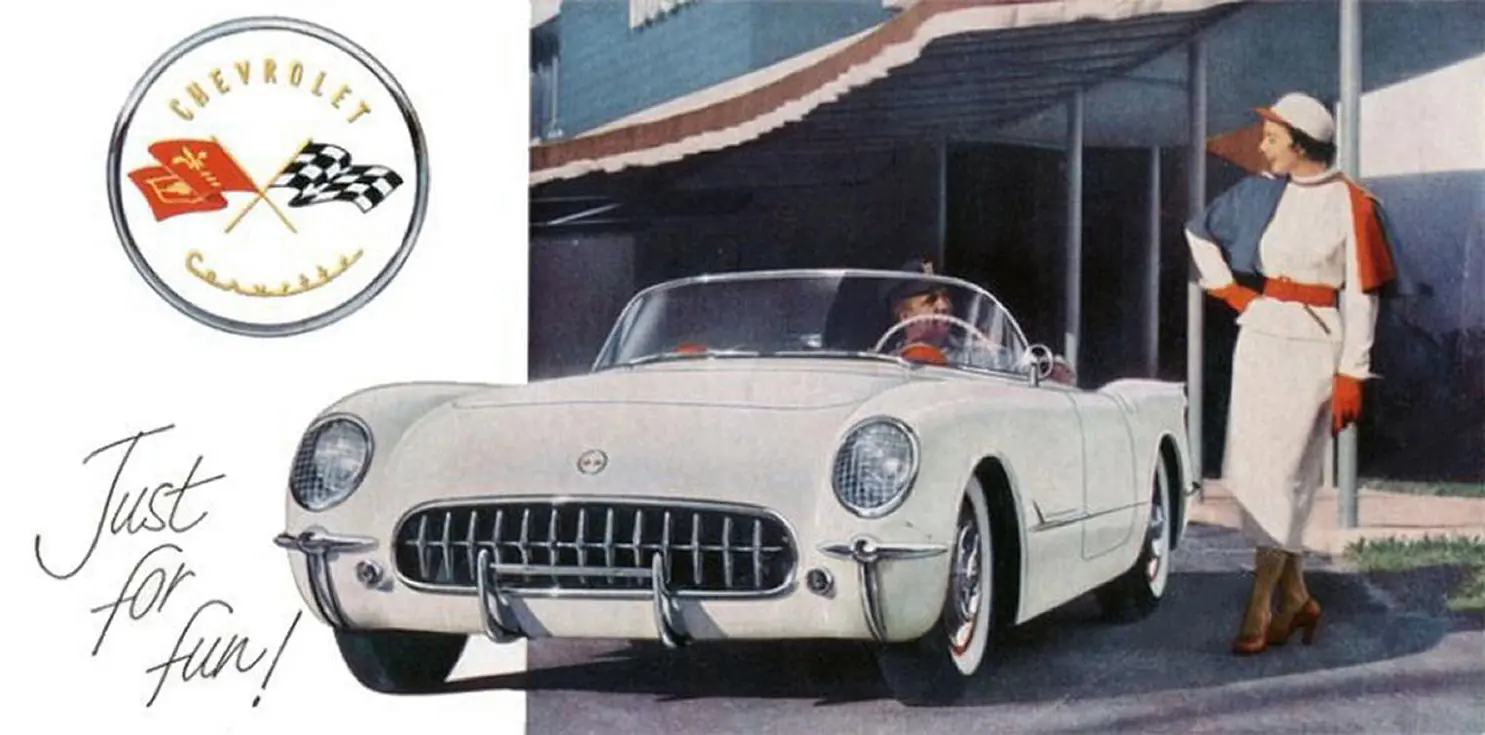THE CHEVROLET CORVETTE AT 70
08 March 2023
‘I was very impressed with the Corvette as a one or two-passenger touring car for those whose minds are not twisted too seriously. The performance is not startling – in fact lukewarm for a 3 ½ - litre sports car but is still fast enough to keep the flies off Aunt Nellie’s head as you whip her over to the pool parlor. If you want a car for competition, don’t buy a Corvette, but if you want an American-made ‘sporty’ car for fun or to impress the hillbillies, the Corvette has a lot to recommend it. Most of all, you can get it serviced at any Nedick’s or Walgreen drugstore – no foreign car can make that statement.’

So wrote the great American motoring scribe Tom McCahill when he tested the Corvette for the May 1954 edition of Mechanix Illustrated. By then, Chevrolet’s rival to imported Austin-Healeys, Jaguars, MGs, Sunbeams and Triumphs had been in production for less than a year. General Motors’s directorship hoped it would become the car of choice for the well-heeled young lawyer or the Ivy League student offspring of a Wall Street broker. Plus, it would radically alter Chevrolet’s previously rather middle-aged image.
In the early 1950s, sales of the marque were not healthy as in the 1949-1950 period. The brand manager Thomas Keating commissioned a sports car to rival those British imports under the codename ‘Project Opel’. To keep costs to a minimum, the resulting C1 series Corvette employed as many existing Chevrolet components as possible. Power was from the familiar ‘235’ 3.9-litre straight-six engine with two-speed Powerglide automatic transmission, but the two-seater GRP bodywork resembled no other Chevrolet. To quote Motor Trend:
Although it was Harley Earl (the head of General Motor’s Styling Section) that came up with the concept and directed the shape of the first Corvette, it was Chevrolet’s new chief of engineering and soon to become general manager Ed Cole that was the corporate driving force behind the project.
The Corvette debuted at GM’s 1953 Motorama show in New York City on the 17th of January, with the first examples leaving the Flint, Michigan production line on the 30th of June. All 1953 models were any colour you wished, providing it was Polo White, with a red interior and a black hood. The price was $3,498 with an AM radio and heater as extras, although all examples were so equipped. Dealers could also boast that the Corvette was the USA’s first- mass-produced GRP-bodied car.
The C1’s top speed was 110 mph, and the brochures promised ‘Airplane type’ instruments and a transmission selector lever that was ‘floor mounted in sports car tradition’. ‘The American Sports Car of the Future!’ also had detachable side windows rather than winding panes, no exterior door handles and a fixed passenger seat.
Chevrolet made just 300 examples in 1953, many going to high-profile owners. For 1954 the target figure from the new St. Louis factory was 10,000 C1s, yet only 3,640 Corvettes left the plant, a third of which remained unsold by the end of the model year. One problem was the price, which Chevrolet may have reduced to $2,774 but was still more than a Cadillac or a Jaguar XK120. Another was the body’s propensity to leak, but possibly worse was that too many drivers did not regard the Corvette as a ‘sports car’.
But 1955 finally saw the C1 gain V8 power – before then, GM corporate infighting denied it this unit. ‘Dual exhausts, a four-barrel carburettor, 8 to 1 compression ratio, and a high-lift camshaft squeeze latent energy out of every drop of gasoline’, raved Chevrolet of the 4.3-litre unit. There would also be a three-speed manual gearbox option, yet sales for that year were just 700.
So, given such figures, why did General Motors persist with the C1? The fascinating https://corvettestory.com/ suggests, ‘We still have the Corvette over 60 years later because Ed Cole, the GM executive who believed passionately in the car and Zora Arkos-Duntov, the engineer who would later be instrumental in the direction of the Corvette. There was also the 1955 Ford Thunderbird’.
Ford had unveiled the T-Bird at the 1954 Detroit Auto Show, and there was no way that General Motors was going to lose face to Dearborn. Chevrolet reprieved the Corvette, and the 1956-model year alterations helped to realise the potential already noted by Tom McCahill. Today the famous name is in its eighth incarnation, with the original C1s being one of the most collectable Chevrolets in automotive history. As the 1954 television commercials stated – ‘She belongs to the highway’:
